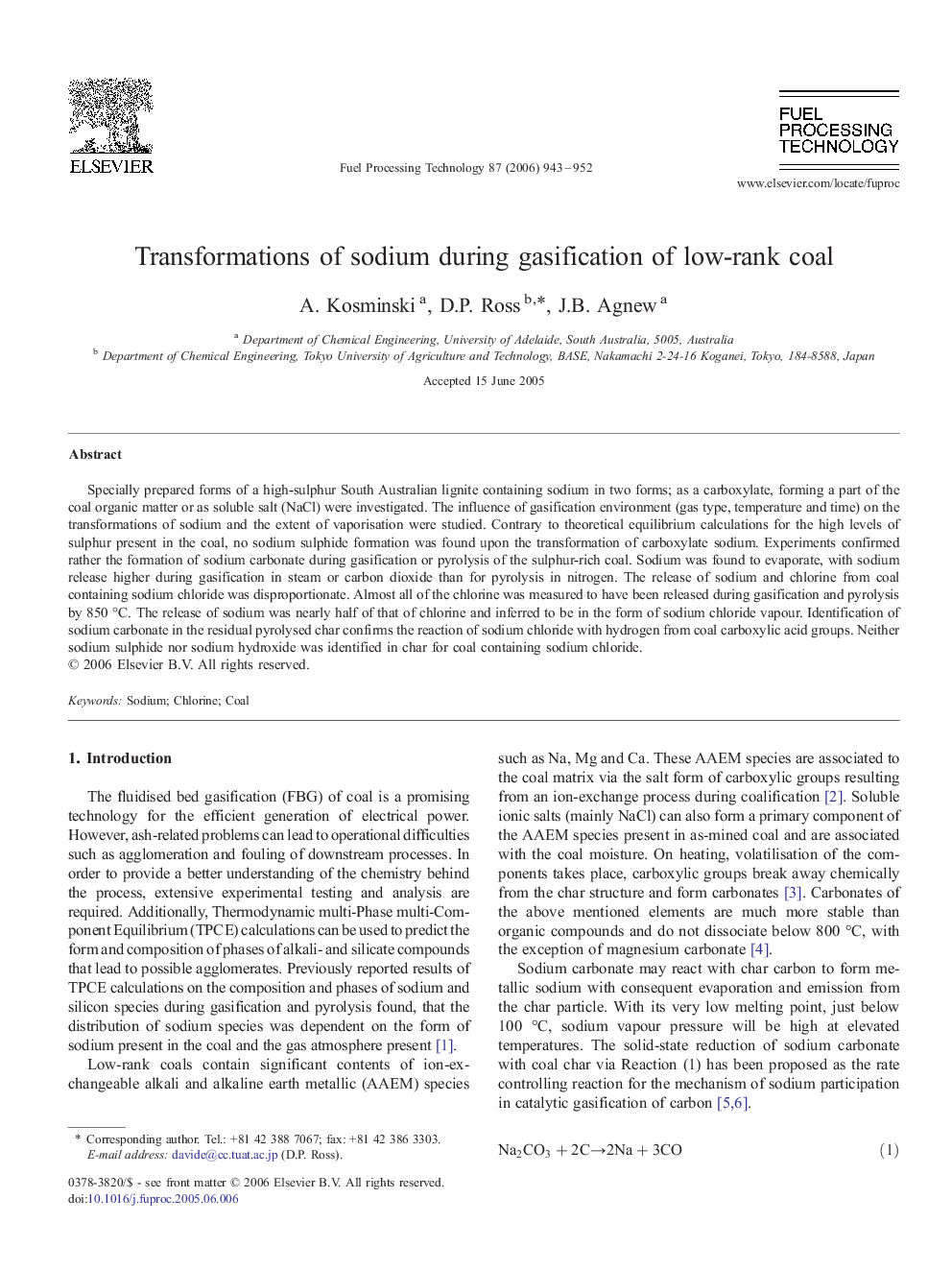| Article ID | Journal | Published Year | Pages | File Type |
|---|---|---|---|---|
| 211182 | Fuel Processing Technology | 2006 | 10 Pages |
Specially prepared forms of a high-sulphur South Australian lignite containing sodium in two forms; as a carboxylate, forming a part of the coal organic matter or as soluble salt (NaCl) were investigated. The influence of gasification environment (gas type, temperature and time) on the transformations of sodium and the extent of vaporisation were studied. Contrary to theoretical equilibrium calculations for the high levels of sulphur present in the coal, no sodium sulphide formation was found upon the transformation of carboxylate sodium. Experiments confirmed rather the formation of sodium carbonate during gasification or pyrolysis of the sulphur-rich coal. Sodium was found to evaporate, with sodium release higher during gasification in steam or carbon dioxide than for pyrolysis in nitrogen. The release of sodium and chlorine from coal containing sodium chloride was disproportionate. Almost all of the chlorine was measured to have been released during gasification and pyrolysis by 850 °C. The release of sodium was nearly half of that of chlorine and inferred to be in the form of sodium chloride vapour. Identification of sodium carbonate in the residual pyrolysed char confirms the reaction of sodium chloride with hydrogen from coal carboxylic acid groups. Neither sodium sulphide nor sodium hydroxide was identified in char for coal containing sodium chloride.
